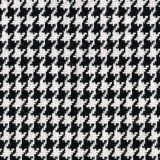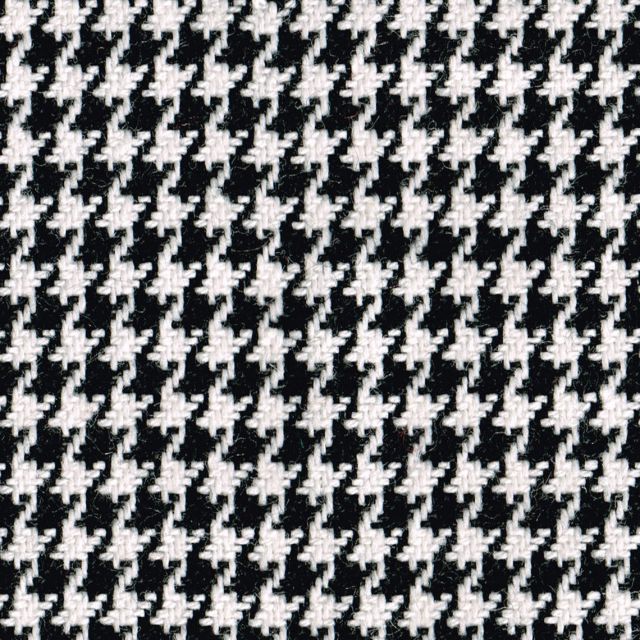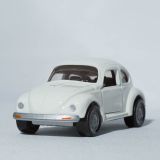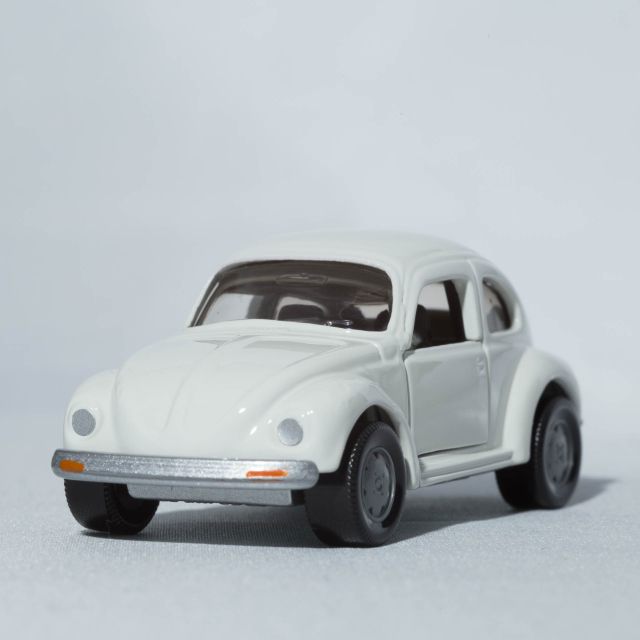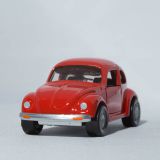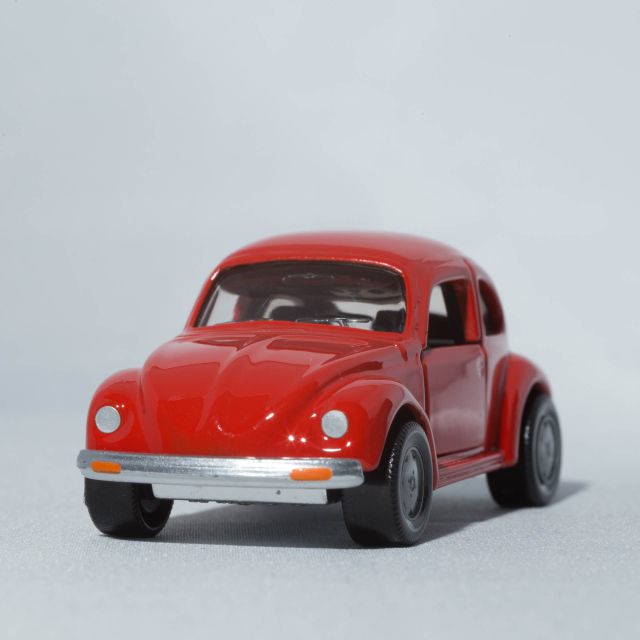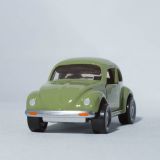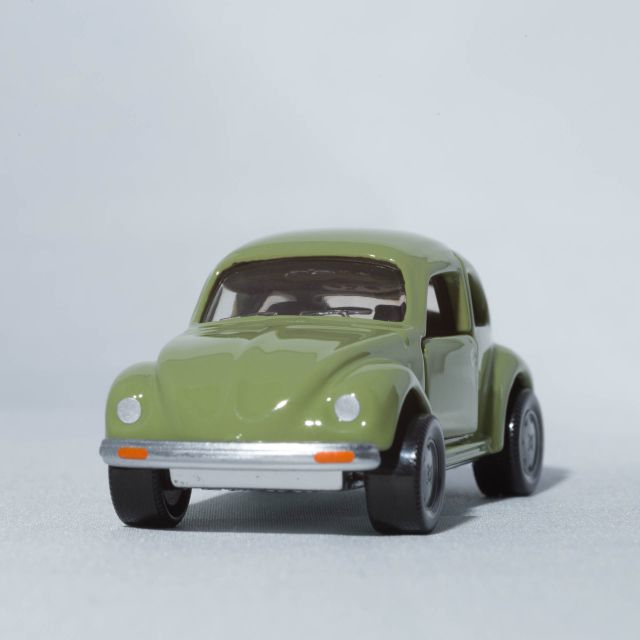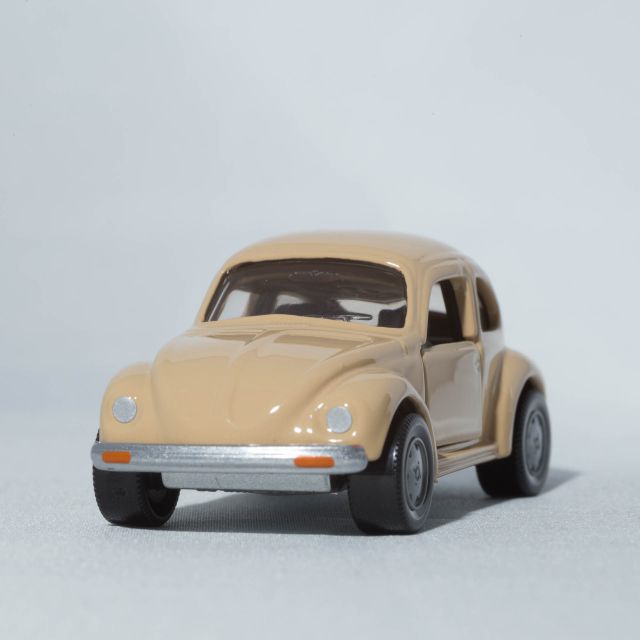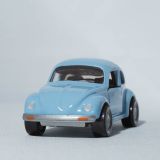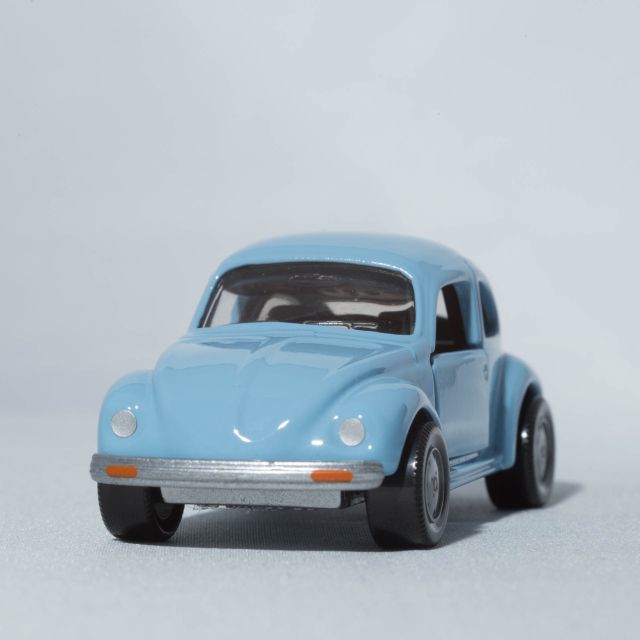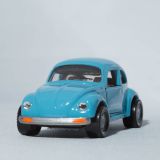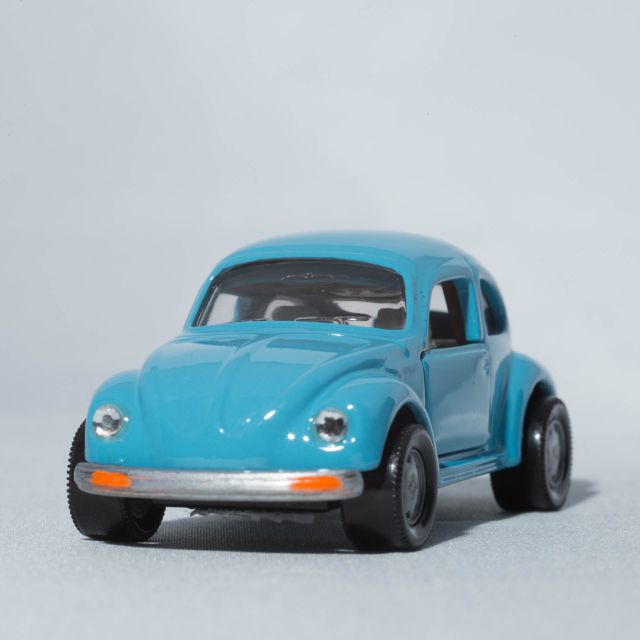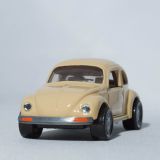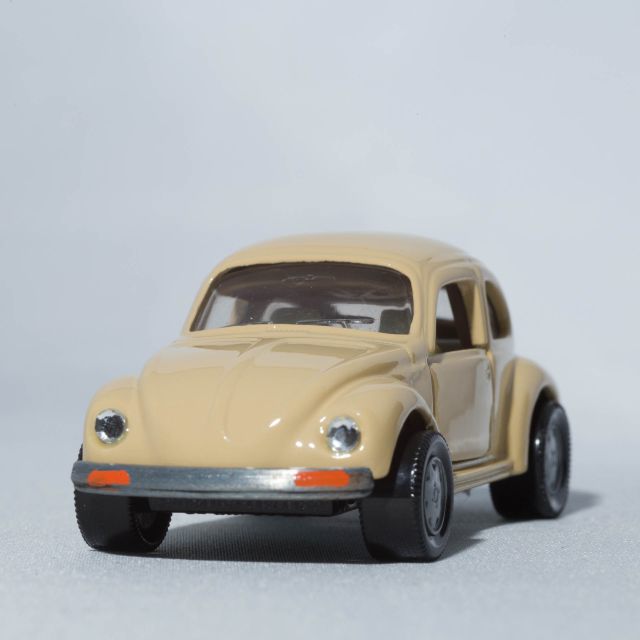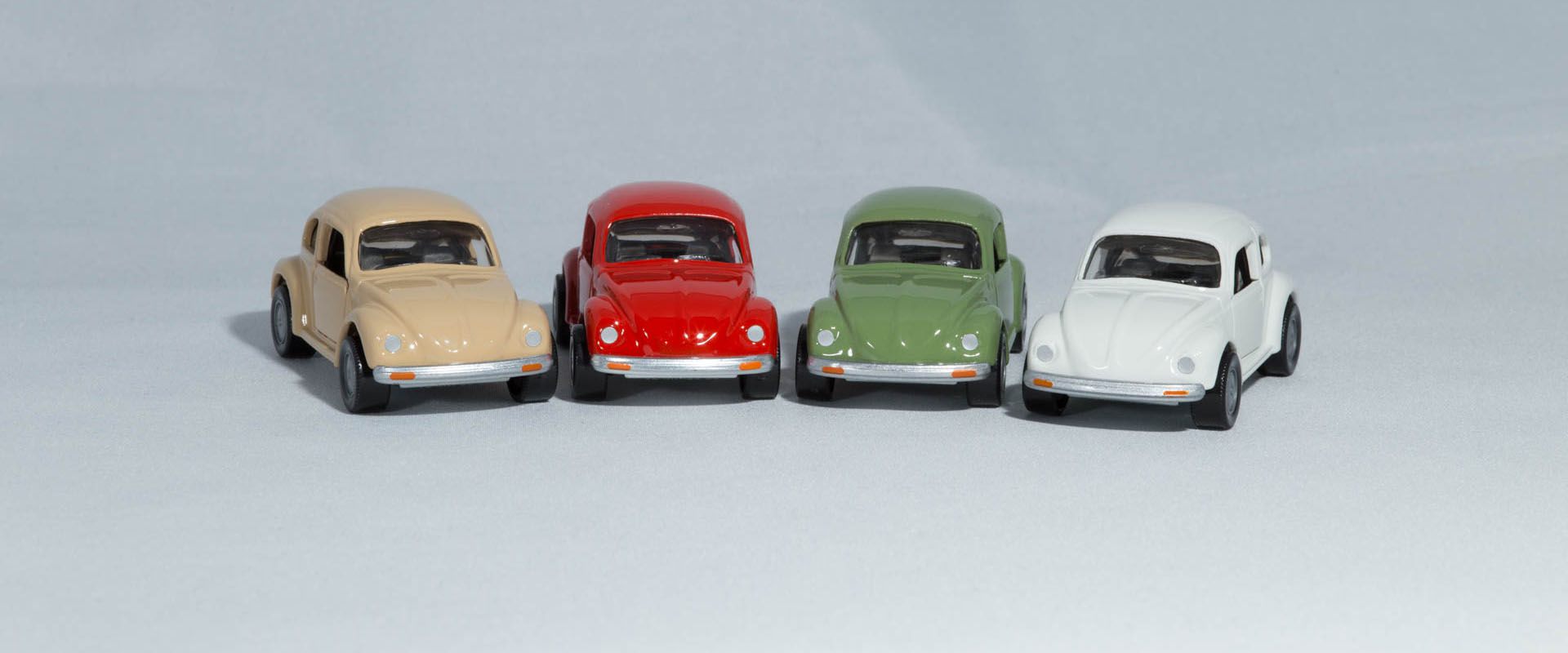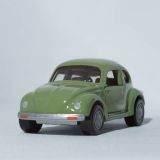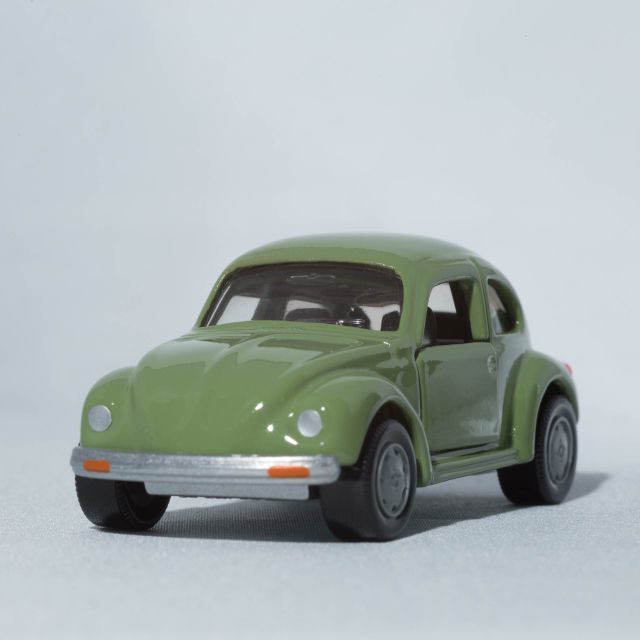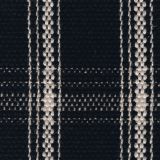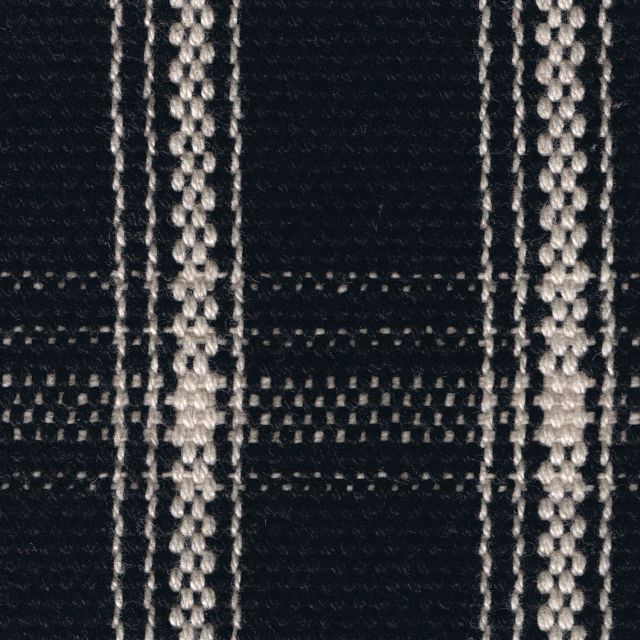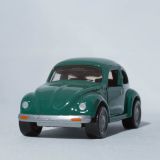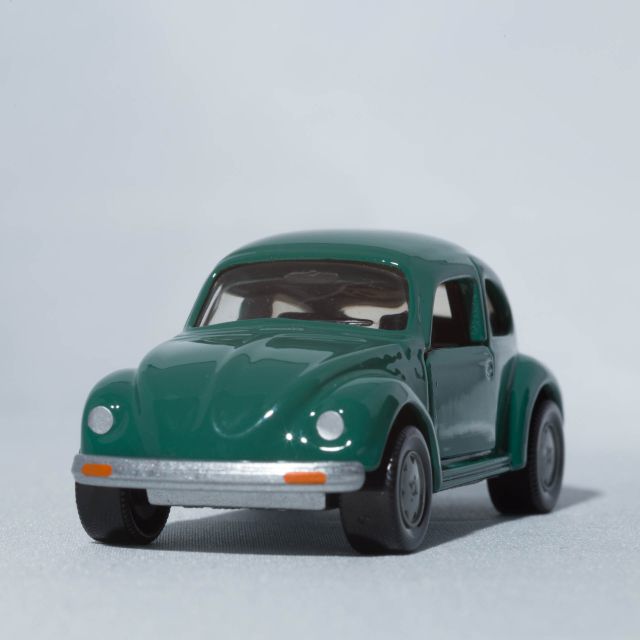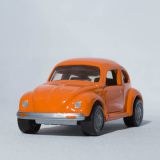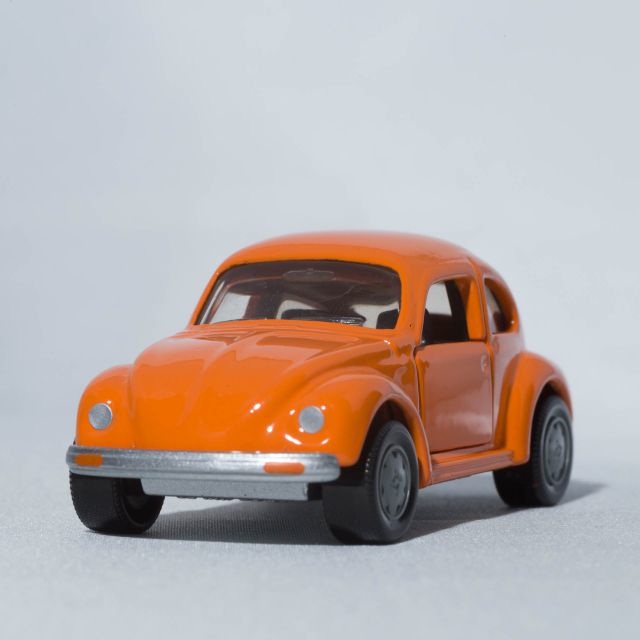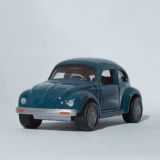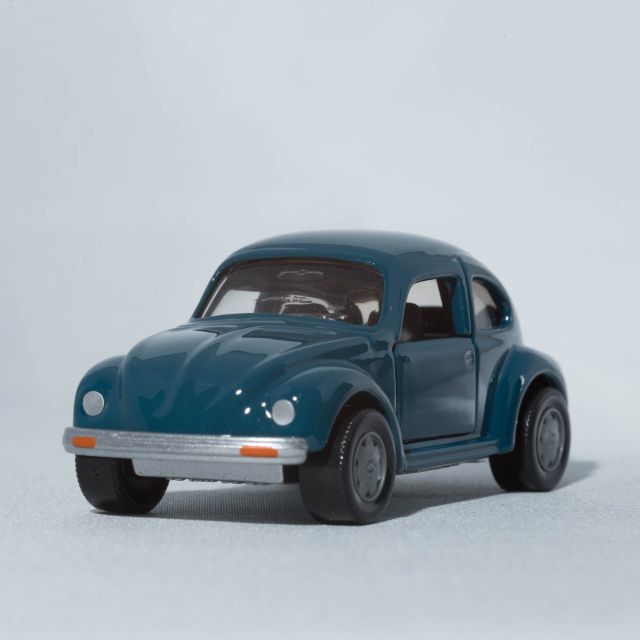The Mexico beetle
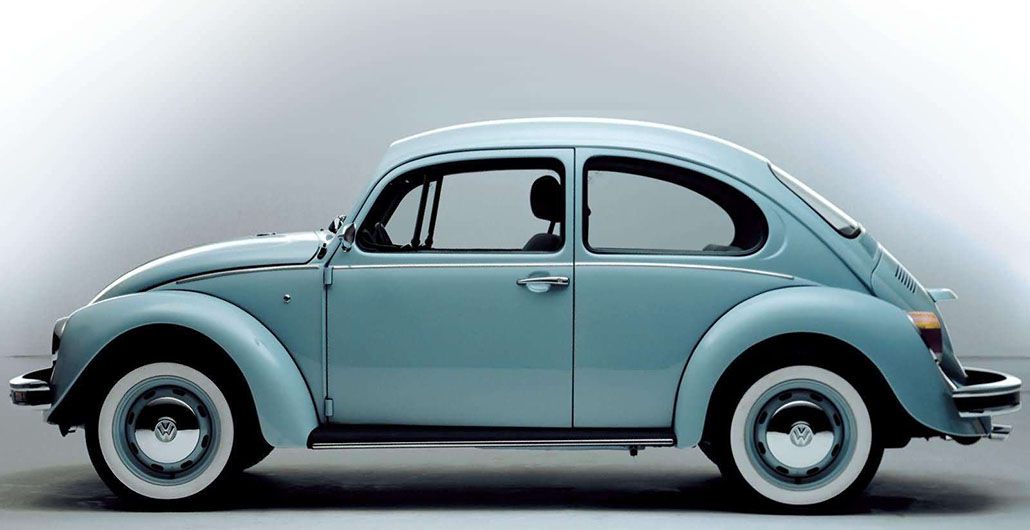
VW Mexico Chronology*
*Source: Eine Geschichte ohne Ende – Gerhard Schreiber – Volkswagen de México
The first phase of Volkswagen's development in Mexico began in 1954 (until 1963): the Mexican vehicle market was dominated by heavy and expensive vehicles from the USA for high-income earners. There seemed to be no market for a popular vehicle that was also affordable for broad sections of the population. Virtually no one knew about the Beetle; its sales prospects in Mexico seemed insignificant. For this reason, the vision of the pioneers to enter the Mexican market should be highly appreciated. Starting in 1954, complete cars were imported from Germany. However, government regulations required that vehicles be assembled in Mexico. Initially, kits were supplied.
The second phase of Volkswagen in Mexico therefore began in 1964 with the start of "real" production: Production hall 1A in Xalostoc near Mexico City was inaugurated on April 20, 1964 and was soon bursting at the seams due to the demand for Beetles. It soon became clear that this was not the right location for Volkswagen Mexico (VWM). Prof. Dr. Heinrich Nordhoff (General Director in Wolfsburg) asked the VWM management to look for alternative locations. A site in the state of Puebla proved to be particularly suitable. It had connections to both the port of Veracruz and the main sales market of Mexico City.
In 1967, the plant moved from Xalostoc to Puebla as the third phase. The first Beetle rolled off the line at the new plant on October 23, 1967. The Mexican government mandated that nearly 60% of the Beetle's parts be manufactured in Mexico in order to create jobs.
The VW plant in Puebla experienced the ups and downs of the Mexican economy, inflation and currency devaluations; the continuation of production was threatened several times. After the end of Beetle production in Europe at the beginning of 1978, VWM management was faced with the difficult task of assuming technical responsibility for the further development of the Beetle. From then on, product support for the Beetle continued in Mexico. The modifications to the engine, which were so important for sales and to comply with emissions regulations, were quickly incorporated into production in Puebla.
This had already been the case before: the 1.5-liter engine launched in Europe in August 1966 was already being produced in Puebla in April 1968. The 1.6 liter engine was added at the end of 1973 (Europe August 1970). In the course of 1977, automatic height adjustment was introduced on the carburetor and an electronic ignition system was installed in October 1987. At the end of 1991, the power unit was fitted with an unregulated catalytic converter. All these improvements served to increase the quality and service life of the engine in addition to complying with emissions regulations. In 1993, the conversion to an injection system with a regulated catalytic converter took place. In addition, the direct current generator was replaced by an alternator to stabilize the power supply. What nobody believed was possible: the air-cooled boxer engine ultimately complied with all international emissions regulations.
Notable changes to the chassis and appearance inside and out were as follows: Disk brakes were added to the proven chassis. In August 1967, a fuel filler neck was added to the right side of the car. In October 1969 the headlights were mounted vertically on the front fenders and the rear engine cover was fitted with air vents, which were widened again in August 1972 to improve engine ventilation. The installation of turn signals in the bumpers followed in 1977. For 14 years, the Beetle underwent few technical changes, mostly cost-cutting measures such as the removal of chrome strips from the windshield, until in 1996 the Beetle rolled off the assembly line with virtually no chrome - everything in body color. A radio-controlled anti-theft alarm system was installed, and in 1984 the front seats were fitted with integrated headrests for added safety. The Beetle lasted until 2003 - with the last special series "Ùltima Edición" the Beetle production was discontinued on July 30, 2003. The 2004 model year began on March 1, 2003, marking 50 years of Beetle history from 1954 to 2004 in Mexico. The Beetle model care listed here also refers to production in Mexico for the domestic market.
-
1954
January: Foundation of the import company Volkswagen Mexicana.
February: Arrival of the first Volkswagen in Mexico.
March: 7 Beetles, 4 Transporters (Type 2) and 1 Cabriolet are presented to the public at the "Germany and its Industry" exhibition.
The first 123 Beetles and 110 Type 2 Transporters are imported.
Due to stricter import regulations, an assembly contract was signed with the Mexican Automex. This was followed by the import of the first disassembled vehicles (144 Beetles and 108 Transporters).Sales of 618 vehicles.
-
1955
The first 250 Beetles are assembled.
Sales increase to 1,765 vehicles.
-
1956
The Mexican government imposes the first import ban on complete vehicles.
Sales of 3428 vehicles.
-
1957
Due to a reduction in import quotas, only 976 Beetles are imported or assembled; another 300 vehicles are approved through negotiations with the authorities.
-
1958
The import quota is only 1,700 vehicles.
-
1959
Mandatory use of domestically produced parts, initially limited to batteries, tires, seat covers, cables and tools.
Sales of 3,789 vehicles.
-
1960
The volume of parts produced in Mexico is increased. VW Mexicana is renamed VW Interamericana (VWI).
Sales of 2,379 vehicles.
-
1961
Automex, VW's assembly company, is threatened with closure. Despite intensive efforts, VWI does not receive an assembly permit, putting Volkswagen's continued existence in Mexico in doubt. Agreements are reached with Automóviles Ingleses (BMC) to assemble only Beetles. The additional quota from BMC (British Motor Company) benefits the VW brand.
Sales of 2,878 vehicles.
-
1962
Under the direction of VWI, Promexa is created, which buys Automóviles Ingleseses and obtains an assembly license. Promexa begins assembly of the Beetle in Xalostoc (near Mexico City); the Type 2 is assembled in Puebla.
Sales of 3,287 vehicles.
-
1963
Volkswagen AG (VW AG) confirms to the Mexican government that it will establish an automobile manufacturing plant in Mexico. VW AG acquires the company Promexa.
Sales of 5,984 vehicles.
-
1964
Promexa is replaced by Volkswagen de México (VWM), first economically and then legally in mid-January. This creates a solid basis for Volkswagen's continued presence in Mexico.
Sales of 8,386 vehicles.
-
1965
VWM and VW AG reach an agreement on the medium-term sales potential in the event of an engine change from 1.2 to 1.3 and 1.5 liters.
Purchase of 230 hectares of land from the Puebla state government and laying of the foundation stone for an automobile plant in Puebla, Mexico. Construction begins four months later. The Mexican Ministry of Finance confirms VWM's exemption from customs duties on the import of all machinery and equipment for the processing, assembly and testing of engines.
VW AG assembles the 50,000 CKD parts for Mexico.Sales of 12,949 vehicles.
-
1966
Completion of the 50,000th Beetle in Xalostoc in January.
The Poblan Official Gazette No. 32 announces that VWM will be exempt from all national taxes for 15 years. VWM exceeds the required 60% national integration and is rewarded with low customs duties and assembly taxes.
The new press shop with a 1,000-ton press is put into operation. Construction of the paint shop, material warehouse, supply facilities and roads begins.
The competition is alarmed by the fact that VWM is building a factory in Puebla with significantly higher sales than in the previous year, and that US car manufacturers are experiencing considerable sales difficulties. As a result, the Ministry of Economics partially discontinues its liberal policy towards VWM. Further restrictions are announced for 1967. VW AG requests an audience with the Mexican president to ensure a secure future for Volkswagen in Mexico. VWM receives a basic quota of 12,000 units and an additional quota of 6,000 units for 1967.17,240 vehicles are sold.
-
1967
Frame construction is transferred from Xalostoc to Puebla and production begins without a hitch. The Ministry of Economy approves a basic quota of 17,300 cars for 1968 and an additional quota of 7,700 cars under certain conditions.
October 23, 1967: The first Beetle is produced at the new Puebla plant.
With the support of VW AG, price reductions of 15% are achieved in negotiations with national suppliers. VWM decides to sell the Beetle with the 1.5-liter engine from May 1968.Production figure: 17,630 Beetles.
-
1968
The Board of Directors discusses VWM's difficult economic situation due to government price controls and approves, among other things, the sale of the Xalostoc plant. VWM and the Board of Directors continue to discuss measures to improve the company's situation.
Production of 110 Beetles with 1.5-liter engines per day begins as planned. On June 12, 1968, the 100,000th Beetle for Mexico rolls off the assembly line at the Puebla plant.
The transfer of Beetle production from Xalostoc to Puebla put many jobs at risk. A solution was found by increasing production from 1969.Production figure: 23,709 Beetles.
-
1969
Launch of the new Beetle, which now more closely resembles the model produced in Wolfsburg and is offered in 3 different versions.
Production figure: 24,437 Beetles.
-
1970
With the introduction of the Beetle model in 1971, the warranty is quadrupled to 40,000 km or 2 years.
Production of the Safari begins with a daily output of 10 units.Production figure: 35,303 Beetles.
-
1971
The Beetle receives a 1.6-liter engine and a body further adapted to German standards. Completion of the 200,000th Beetle for Mexico. The first 1,000 Beetle cabs are produced; follow-up order for another 1,000 Beetle cabs. Production of the station wagon begins.
Production figure: 44,037 Beetles.
-
1972
Another 1,000 Beetle cabs are delivered to Mexico City, bringing the total number of Beetle cabs to 3,000.
Export of 100 Beetles to Panama, Nicaragua, El Salvador and Guatemala and 35 Safaris to Cuba. Negotiations are underway with the Cuban government for a further 400 Beetles and Safaris.Production figure: 52,503 Beetles.
Sales of the Safari rise to 53,684; 3,158 Type 2s are sold.
-
1973
Production of the Transporter (Panel) begins; 50 Safaris are delivered to Volkswagen of America, where they are marketed as "The Thing". It is the first export of Mexican-made vehicles to the United States.
Production figure: 62,913 Beetles.
-
1974
VWM sales reach an all-time high of 114,839 vehicles.
VWM participates in Group-wide integrated production by supplying subframes, wishbones and rear axles to VW AG and VW do Brasil.Production figure: 77,391 Beetles.
-
1975
Completion of the 500,000th Volkswagen for Mexico. VWM decides to offer the Beetle with radio, seat belts and radial tyres as optional extras for the 1976 model year.
Production figure: 71,978 Beetles.
-
1976
The VWM dealer network has grown to 198 dealers.
Production figure: 50,069 Beetles.
-
1977
Beetle production is transferred from VW AG in Emden to Puebla and re-exports to Europe begin. The 34 bhp Beetle engine, not available in Mexico, is specially built for export to Europe. At the end of 1977, 1,694 Beetles leave Mexico and are expected at the port of Emden.
Production figure: 25,927 Beetles.
-
1978
Production figure: 51,697 Beetles.
-
1979
VWM sold a total of 112,511 vehicles, of which 19,242 were exported.
Production figure: 49,613 Beetles.
-
1980
Completion of the 1,000,000th Volkswagen in Mexico. Improvement of exhaust emission values for Beetle engines to meet national regulations and to enable the Beetle to continue to be exported.
Production figure: 47,162 Beetles.
-
1981
The 20,000,000th Beetle in the history of the VW Group rolls off the production line at VWM. It is the special 'Silver Bug' model offered in Europe to mark the anniversary. It receives a place of honour in the Volkswagen Museum Foundation in Wolfsburg.
Production figure: 48,913 Beetles.
-
1982
Start of a severe economic crisis in Mexico; reintroduction of price controls on passenger cars.
Production figure: 57,120 Beetles.
-
1983
In July, the Beetle is fitted with a modified gearbox for the Mexican market.
Production figure: 41,810 Beetles.
-
1984
During his visit to VWM, Chancellor Kohl bids farewell to the 100,000th Beetle for European markets. It is a special velvet red model.
Production figure: 50,048 Beetles.
-
1985
The last Beetles for Europe are delivered in September. The special edition '50 Years Beetle' marks the official farewell to the European market.
Production figure: 30,566 Beetles.
-
1986
Mexico experiences an economic slump. Production fell by a third and exports reached only 85 cars.
Curved rear end (like German production from 8/74); rear window enlarged by 4 cm (like German production from 8/71); May 1986: special model Europa Edición 1 in black with Pepita pattern seats.
Production figure: 16,746 Beetles.
-
1987
Conversion of engine and axle parts for the Beetle from in-house production to supply by VW do Brasil. Windscreen wiper interval becomes standard; rubber seals on front and tailgate are clamped; clamping strips are omitted. October 1986: Special model Europa Edición 2 in Meteor metallic and similar equipment to the special model 50 years for Europe.
Production figure: 17,166 Beetles.
-
1988
The government approves significant tax cuts for new cars. Use of a new paint shop with international quality standards.
Electronic ignition; fresh air system in the bonnet, air vents on the dashboard and central heating nozzle; tank support plate without bulge; engine compartment lighting; headlamps with plastic lens; no passenger footrest.
Production figure: 19,008 Beetles.
-
1989
VWM presents the Beetle as a particularly economical offer thanks to a tax concession, a step towards a continued positive future for the development of new groups of buyers: VWM Purchasing presents successful negotiations with 48 out of 101 suppliers willing to grant special discounts for the Beetle. The Mexican government signs a decree (Car for the People) granting special tax concessions for vehicles costing less than 13.8 million pesos. The Beetle is sold for 13.75 million pesos, a 20% discount. Market analyses predict a jump in sales to 70,000 units. VWM organises itself with extra shifts and internal changes to take advantage of the sales boom.
To mark VWM's 25th anniversary, a limited anniversary edition of the Beetle, Golf and Jetta is offered. The special Beetle 'Jubileo' model is painted in star blue metallic with blue velour seats, door and side panels and chrome hub caps.
Fire extinguisher as standard.
Production figure: 32,421 Beetles.
-
1990
Handrails now in black; foamed two-spoke steering wheel; some bumpers with 4.8 cm wide centre surround;
Start of 3rd shift for Beetle production. Completion of the 1,000,000th Beetle at VWM in October.
Production figure: 84,716 Beetles.
-
1991
The Beetle engine from December is equipped with an unregulated catalytic converter welded to the rear silencer; only one exhaust pipe on the left. Galvanised sheet steel fuel tanks on both sides. Modified dashboard with Golf 2 toggle switches and enlarged standard size radio compartment. Chrome frames on the windscreen gradually removed.
Production figure: 85,681 Beetles.
-
1992
Exterior mirror thread in passenger door as standard; new distributor; new sliding washer reservoir now in the side of the boot instead of in the spare wheel well.
VWM produces the 21 millionth Beetle in the VW Group on 23/06/92.
Special model '21 millones' in silver metallic, turquoise metallic and tornado red.Special model '500' to commemorate the 500th anniversary of the discovery of America in red with black leather interior, wooden steering wheel and alloy wheels.
Beach' special edition.
Production figure: 86,613 Beetles.
-
1993
Introduction of the VW Beetle 1600 i from 19.08.1993 with engine number 'ACD', electronically controlled Digifant injection (Euro 1 emission standard), fully electronic map ignition, electric fuel pump on the right under the tank, control unit under the rear seat, hydraulic tappets, lambda sensors and regulated 3-way catalytic converter. Same as VW 1600 GL with improved features.
Special model 'Wolfsburg Edición' in steel blue metallic, velvet grey metallic and Indian red pearl effect; seats with backrest pockets.
Production figure: 98,236 Beetles.
-
1994
Front disc brakes with separate wheel hub; three-phase alternator gradually introduced in series production; fire extinguisher now on A-pillar with holder; modified battery mounting; black cover plate over battery; rubber bellows for cables to the door; VWM sets a new record with 256,317 vehicles produced, of which 78,276 were Beetles.
Special model '40 anos en Mexico' in Kansas beige, beige interior, chromed wheel trims; cassette radio.
Special edition 'Edición one' in metallic rosé, purple seat upholstery, cassette radio;
Fire Beetle' special edition in black with alloy wheels, black and red seat upholstery
Production figure: 78,276 Beetles.
-
1995
Cooling air regulation without thermostat; light grey perforated headliner; light grey sun visors; rear seat safety lock; new central connector for rear light unit;
Special 'Jeans' model in jeans blue, grey-blue fabric seat covers with pockets, grey-blue door and side panels;
Start of production of the 'City' Beetle as a basic model.
Production figure: 15,933 Beetles.
-
1996
No chrome parts; bumpers and headlight rings in body colour; black door and bonnet handles and door mirrors; black VW badge on bonnet;
No trim strips on belt line; no engine compartment light, retaining straps and passenger handle; no rear ashtray; reduced noise insulation; no forced ventilation;
VW 1600 GL with upmarket equipment and VW 1600 i City with basic equipment.
Relocation of Beetle production to separate, modern facilities, including dedicated paintshop, in Halls 27 and 28. VWM re-launches the Beetle in Bolivia, Chile, Ecuador, Peru, Puerto Rico and Central America.
The VW Group's 21,300,000th Beetle is produced at VWM.
141 units of the special 'Harlequin' model are produced: Basic colour is Broom Yellow LR132; bodywork is replaced by LD6D Pistachio Green, LD5D Chagall Blue and LY3D Tornado Red.
Production figure: 33,099 Beetles.
-
1997
Head restraints no longer adjustable; modified rear light lenses. Front turn signal housing in black plastic instead of grey.
Clásico and City models.
Beetle production increased from 84 cars per day to 170, or 1020 per week.
Production figure: 35,678 Beetles.
-
1998
Modified engine control unit and catalytic converter.
Model 'unificado' replaces Clásico and City from February 1998; simplified equipment.
Production figure: 36,492 Beetles.
-
1999
Output 50 hp instead of 46 hp with modified control unit; immobiliser with digital key; modified shape of the number plate light.
Production figure: 36,446 Beetles.
-
2000
Modified seats.
Special 'Jeans' model: 1000 units produced; Baltic Blue metallic LG5T; 'Fire' alloy wheels; seats, door and side panels in dark denim with backrest pockets.
Special 'Clásico' model with Indian red pearlescent chrome trim and beige interior and backrest pockets.
Production figure: 41,260 Beetles.
-
2001
Modified catalytic converter; modified wheel arch.
Production figure: 38,850 Beetles.
-
2002
Improved exhaust emissions due to modified control unit.
Special 'Summer' model in soft blue or lemon yellow; grey seats with centre sections in soft blue or lemon yellow; chrome wheel trims.
Production figure: 24,407 Beetles.
-
2003
Interior headlining no longer perforated; the last digits of the chassis number are engraved in the windows, headlights and rear lights as anti-theft protection.
From April 2003 production of the special series 'Ultima Edición' as model year 2004 (see separate chapter). Last production on 30/07/2003.
Production figure: 7561 Beetles of which 3,000 Última Edición.
Total production in Mexico
Approximately 1,711,000 Beetles. This puts Mexico in fourth place behind Wolfsburg (approx. 11.91 million), Emden (approx. 2.36 million) and Brazil (approx. 3.32 million), ahead of Belgium (approx. 1.1 million).
Sources
own information
Gerhard Schreiber, Volkswagen de México, Una historia sin fin, Puebla 1998
Nicolas Rosenow, Volkswagen Käfer, Schneckenlohe 2013.
Mexico Beetles produced for European market
Model year 1978 (1-8/1978)
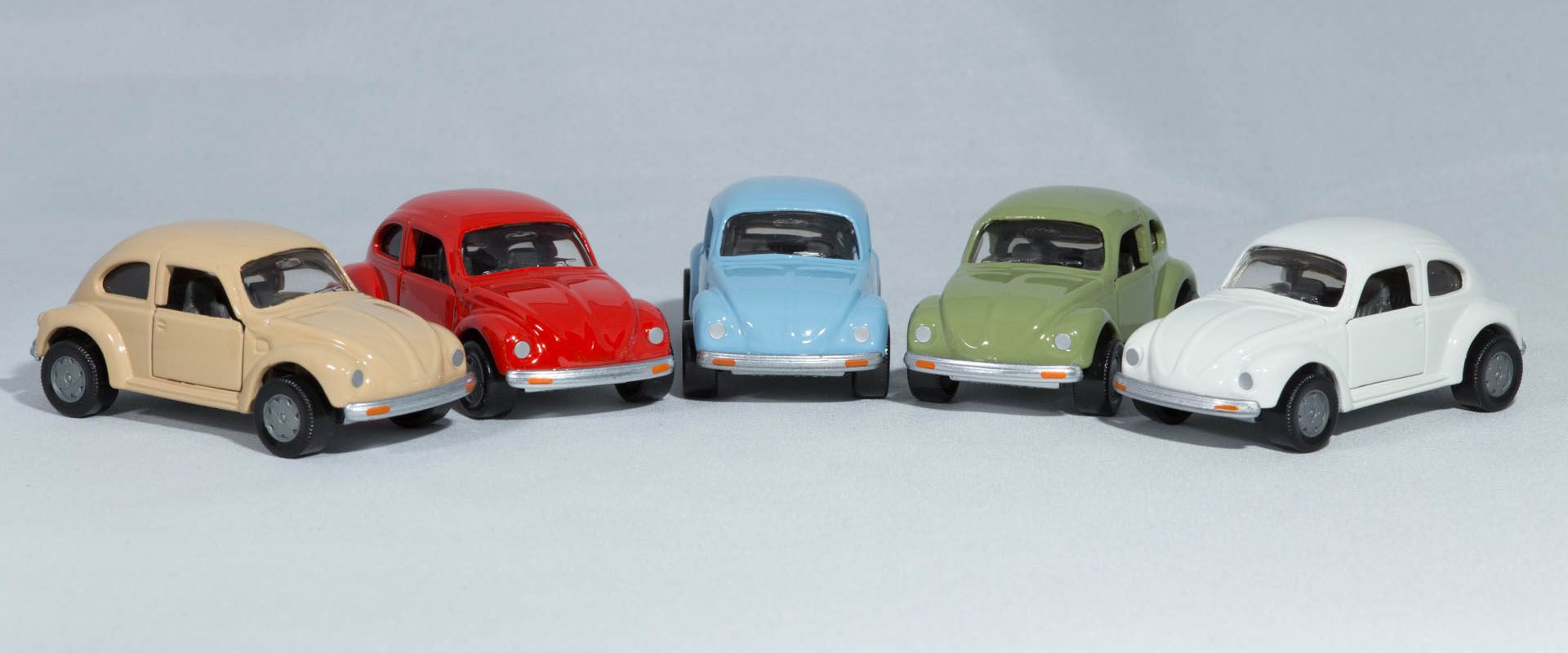
When the last European-built Beetle rolled off the production line in the middle of the model year - a Dakota 1200 with basic equipment - on 19 January 1978, the first shipload of Beetles built in Mexico for the European market had already arrived in Emden weeks earlier. The changeover had been prepared well in advance, and the Mexican Beetle had been modified in particular by removing the previous US turn signals at the front and four-chamber US tail lights at the rear. In addition, the European market received a version which was not available in Mexico and which differed in a number of details from the Beetles built in Europe:
Most noticeable was the absence of the basic 1200 and the 1.6 litre/50 bhp engine. Interestingly, it was this engine that was built exclusively in Mexico, albeit with slightly less power due to a lower compression ratio. Instead of offering this engine in Europe, which would have been the obvious choice, VW had 1200 engines built in Mexico especially for Europe, to give the Beetle the status of an economy car and to differentiate it from the 40 bhp Polo and 50 bhp Golf. Nevertheless, the bonnet was fitted with air vents reserved for the 50 bhp version of the Emden Beetle. The powerful three-phase alternator was replaced by a DC alternator. At least radial tyres were fitted ex works. The rear axle was also changed: it was still designed as a pendulum axle, although the double-joint axle had already been fitted to the automatic Beetle in 1967 and to all Beetles in the USA shortly afterwards. However, this rear axle was never built in Mexico. The rear end was lowered for the European market, which meant that all Mexico Beetles officially imported by VW were significantly lower at the rear than at the front and, unlike before, were only approved as four-seaters instead of five. The interior lacked the two-stage fresh air blower, leaving only forced ventilation, the door contact switch on the right-hand side, the mirror in the passenger sun visor and the shelf above the rear luggage compartment. The carpet there - at least in the 1978 model year - no longer extended to the rear window. Elsewhere in the car the carpet was no longer anthracite felt, but rubberised napped carpet. The rubber mats at the front and rear, which again extended over the centre tunnel, were difficult to clean and tended to tear. It was annoying that the rear seat backrest was now only secured with a rubber strap, as in the Spark Beetle, and that the door pockets had been removed. Instead, there was a footrest for the passenger, two-tone sun visors (black inside), a plastic glove compartment instead of the dirt-sensitive white cardboard, a grained steering wheel rim for the first time, shrink-wrapped loudspeaker grilles next to the speedometer and glove compartment lid, and a 'proper' handbrake boot. On the outside, the rear window had shrunk to its pre-August 1971 size, the curved rear end panel had disappeared, the rubber strips on the bumper had been removed, but there was a chrome strip on the running board again and chrome exhaust pipes instead of black. With the exception of the radio and the special colour, the previous extras, including the sunroof and air conditioning, were completely dropped. Even the range of colours was reduced to five and later four. If it is no longer possible to speak of a car that was equivalent to the last 1200 L built for the European market in terms of technical features and equipment, this is certainly no longer the case in comparison to the US Beetles previously built in Emden with fuel injection, regulated catalytic converter, side impact protection in the doors and bumpers with impact elements.
"The new Beetle - has more, costs less", VW advertised the Mexican model in 1978, alluding to the fact that the price of the only remaining L model from Mexico was significantly lower than that of the Emden Beetle in L trim. Some jobs were retained in Emden, as the final assembly of parts for the European market took place there. According to press reports, an additional final inspection was carried out at first, but this is said to have been discontinued soon after.
Chassis numbers
118 2 050 001 to 118 2 112 000
Engine numbers
D1 421 641 to 433 640
The mystery of light blue Mexico: The original VW brochure from January 1978 shows the colours Miami Blue and Dakota Beige instead of Florida Blue and Mexico Beige. However, the last part of the ARD Tagesschau report from 19 January 1978, which is available on YouTube, shows the first delivery of Mexican Beetles (landed on 15 December 1977): The Mexican Beetles, which can be seen in the exterior shots and on the final inspection conveyor belt in Emden, appear to be Florida Blue. Until now, we thought it unlikely that after the first batch of Florida Blue Beetles, more Miami Blue Beetles would be delivered from Mexico. We therefore assumed that there were no Mexican Beetles in miami blue delivered to Germany. We were not aware of such a vehicle until now. In the meantime, however, the K-UE Club has received photos of a Mexican Beetle delivered to Germany, model 1978 with a high, i.e. late, chassis number, probably from the second quarter of 1978 - and this Beetle is originally Miami blue. So it did exist! This means that Florida Blue and Miami Blue were apparently available in the 1978 model year. We are now looking for evidence of the existence of a 1978 Dakota Mexico Beetle.
Model year 1979 (8/1978-7/1979)

The carpet in the rear boot is changed (no more rubberised nubby carpet) and extended under the rear window. May 1979: static rear seatbelts; the brochure incorrectly shows automatic seatbelts!
Chassis numbers
119 2 100 001 to 119 2 121 136
Engine numbers
D1 433 641 to 454 776
Model year 1981 (8/1980-7/1981)
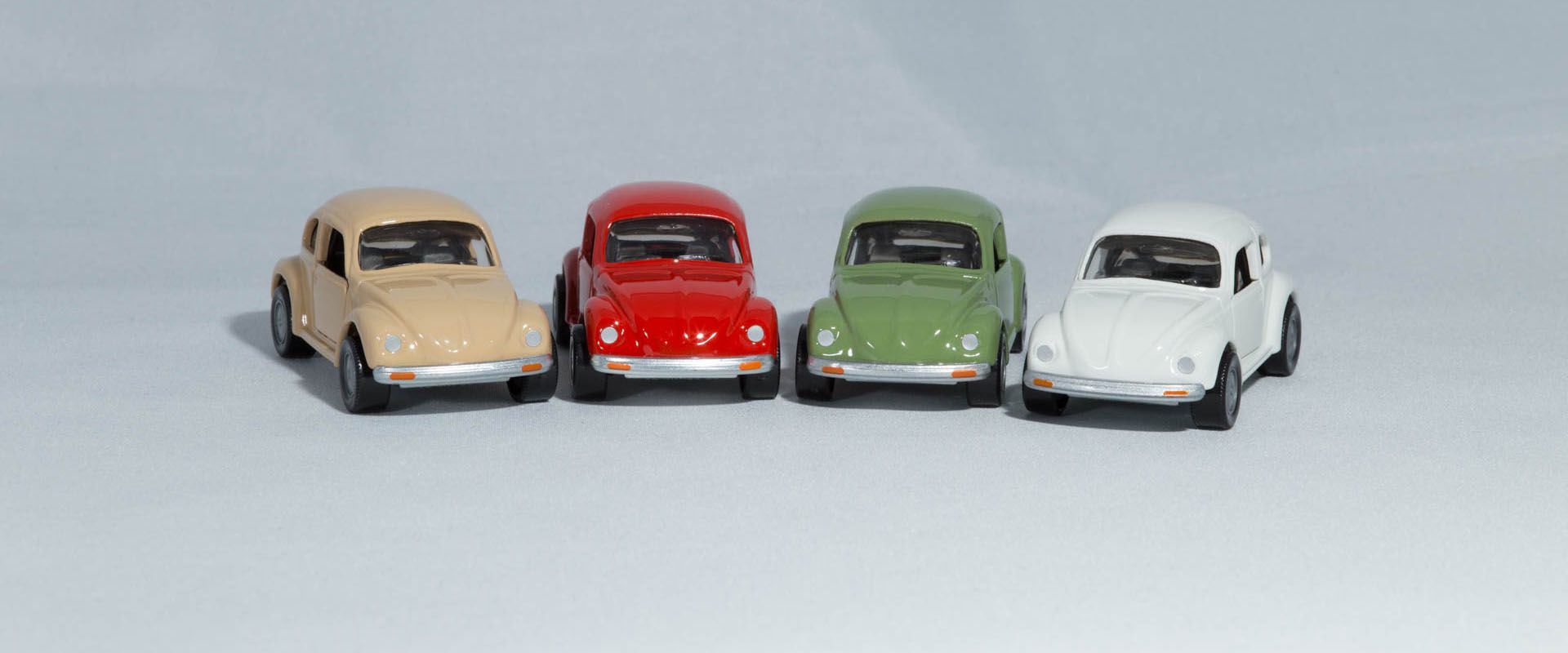
There are no slots in the bonnet. Golf door opener and larger steering wheel switches (indicators, windscreen wipers). Four mounting cubes welded to the rear end tips and in the front wheel arches.
Chassis numbers
11 B M 000 001 to 11 B M 013 400
Engine numbers
D1 466 585 to 479 984
Model year 1982 (8/1981-7/1982)

From spring 1982, the pneumatic windscreen washer system was replaced by an electric one. Curiously, the pump was made in Japan. There is now a brake indicator light next to the speedometer.
Chassis numbers
11 C M 000 001 to 11 C M 009 776
Engine numbers
D1 479 985 to 489 760
Model year 1983 (8/1982-7/1983)
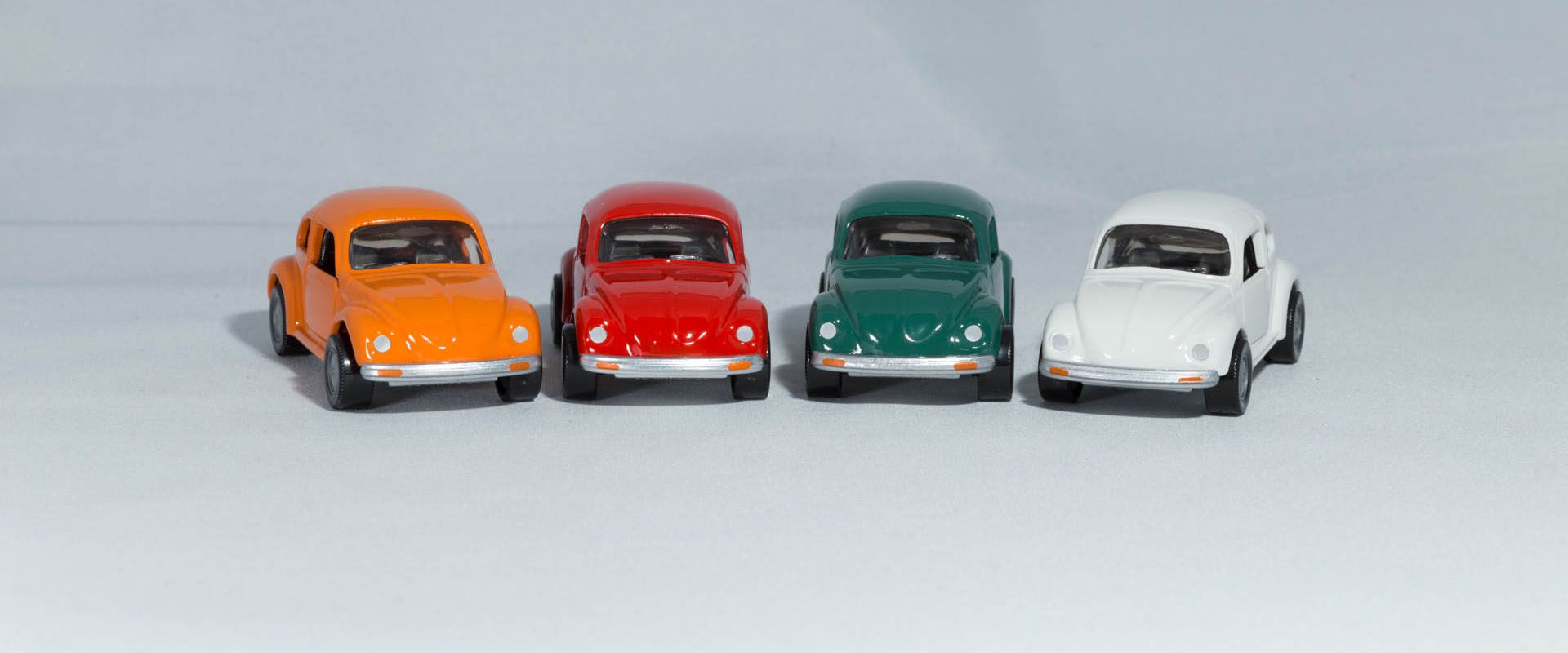
The seat upholstery of the standard Beetle changed from houndstooth to tartan (like the Silver Bug before it). The rear light sockets are now supplied in black. A price reduction of DM 500 to DM 9,395 on 17 January 1983, also reported in the news, led to a significant improvement in sales figures in Germany.
From around May 1983, the tartan seat upholstery was also available on the headrests (previously only black). Larger water drainage holes in the sills with better drainage rubber (as in the frame fork).
Chassis numbers
11 D M 000 001 onwards
Engine numbers
D1 489 761 to 507 659
Model year 1985 (8/1984-7/1985)
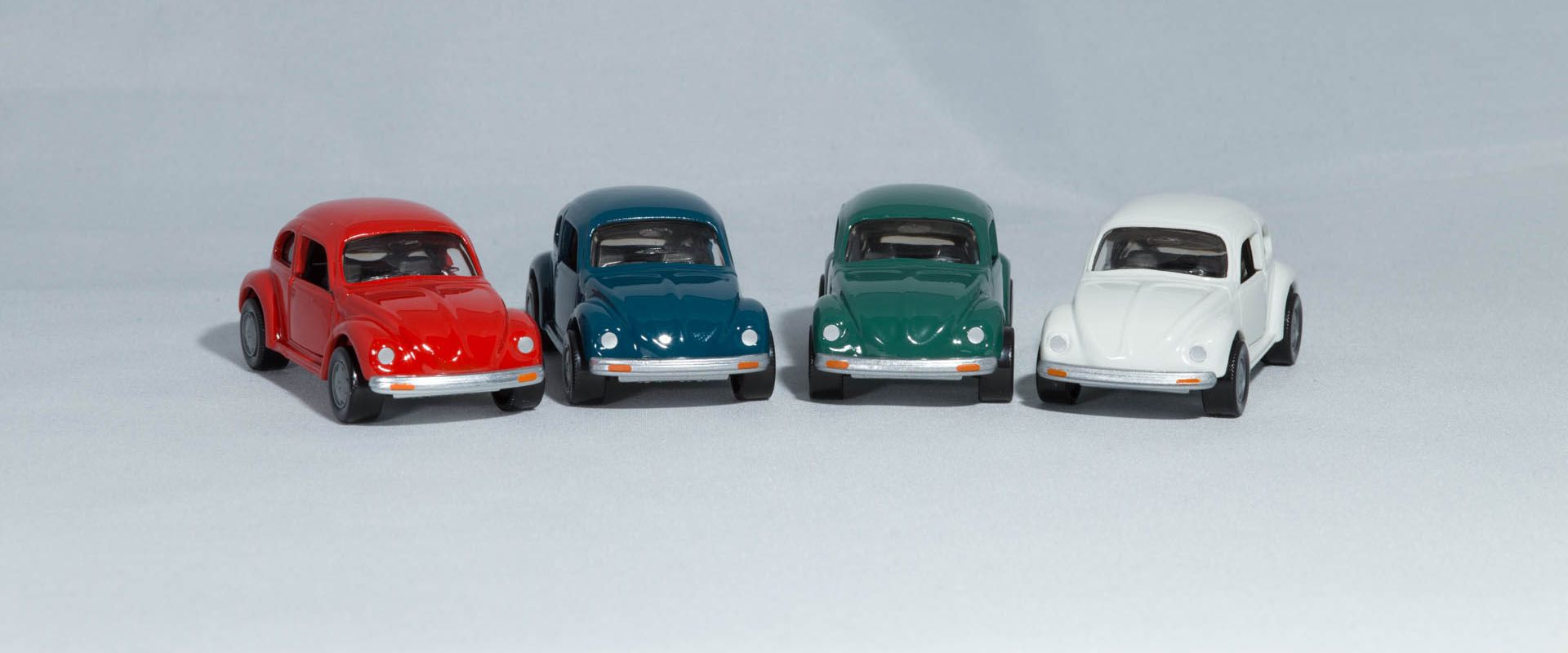
Constant price increases from the summer of 1984 due to the unfavourable dollar exchange rate caused sales to collapse.
Chassis numbers
11 F M 000 001 to 11 F M 009 988
Engine numbers
D1 523 897 to 533 884
Model year 1986 (8/1985-12/1985)

Larger rear window and again curved cover plate, but not on the production models, only on the Jubilee Beetle.
Chassis numbers
11 G M 000 001 to 11 G M 003 213
Engine numbers
D1 533 885 to 537 097
Special editions
-
Silver Bug
From May 1981 in silver metallic L90G, black stripes on flanks and 'Silver Bug' lettering, additional 20 million badge on bonnet and left front flank, '20 million' key fob and gear knob, wheels with chrome rims, tartan seats. Edition of 2000 cars.
-
Silver Bug 2
From September 1981, recognisable by the closed bonnet, the decor under the side trim strips and the brake indicator light. Edition of 1800 cars.
-
Jeans Bug
From May 1982 in Alpine White and Mars Red, with all trim in matt black instead of chrome, silver stripes on the bumpers, double decorative stripes on the flanks and under the trim with 'Jeans Bug' lettering, additional lettering on the bonnet. Black rims and hubcaps, denim seats, 'Jeans' gear knob, limited edition of 1000.
-
Special Bug
From September 1982 in Black Metallic LG9U and Mars Red with all trims in matt black instead of chrome, gold stripes on bumpers, gold double decorative stripes on flanks and under trims with 'Special Bug' lettering, additional 'Special' on front and bonnet, gold rims with black wheel trims and hubcaps, tartan seats (like Silver Bug, but with gold trim instead of white), 'Special' gear knob. Limited edition of 2000 (1000 each in red and black).
-
Aubergine Bug
From May 1983 in Aubergine Metallic LG4U with body coloured rims, chromed wheel trims, silver double decorative stripes on the sides and under the trims, aubergine coloured seats, interior and carpets. Edition of 3300 cars.
-
Alpine White Bug
From May 1983 in alpine white with chromed wheel trims, silver double decorative stripes on the sides and under the trims, aubergine seats, interior and carpets. Edition unknown.
-
Ice Blue Metallic Bug
From October 1983, also known as the "Winter Beetle" in the Netherlands, ice blue metallic LG5Y, chromed wheel trims, double decorative stripes on the sides and under the trims, light carpets. Edition of 2000 cars.
-
Alpine White Bug 2
From October 1983 in Alpine White with chromed wheel trims, double decorative stripes on the sides and under the trims, light carpet. Edition unknown.
-
Ice Blue Metallic Bug 2
From March 1984, also known as the "Winter Beetle" in the Netherlands, ice blue metallic LG5Y, chromed wheel rims, double decorative stripes on the sides and under the rims, black carpet. Edition of 1800 cars.
-
Sunny Bug
From May 1984 in Sunshine Yellow LG1H, double decorative stripes on flanks and under moulding, chromed wheel trims, curry yellow seats, black carpet. Edition of 1800 cars.
-
Velvet Red Special Beetle
From September 1984 in Velvet Red LG3C, chrome wheel trims, Mauritius Blue flowers outside and double decorative stripes under the trims, blue carpets and side panels inside with red seats with blue stripes. Edition of 2600 cars.
-
Jubilee beetle
From September 1985 in Pewter Grey Metallic LAY7 (the cars damaged in a hailstorm in Emden were repainted in Zinc Grey Metallic!), coloured glass, grey carpets, interior and roof lining, grey seat covers with coloured stripes, Golf sports steering wheel, silver double decorative stripes on the sides, 2 "50 Years Beetle" emblems, 165 SR 15 tyres on sports rims. Edition of 2400 cars.



